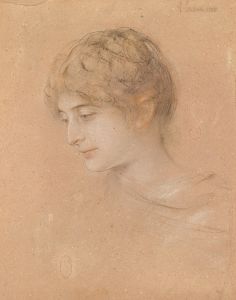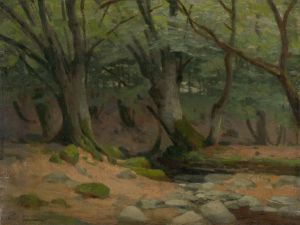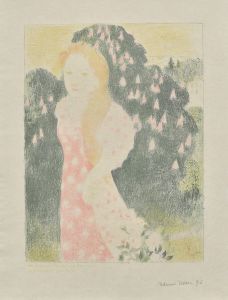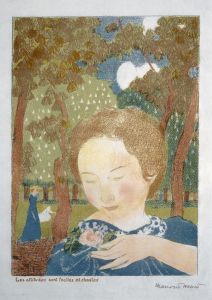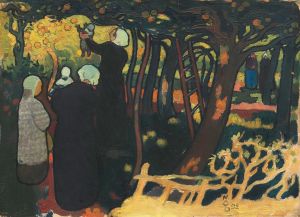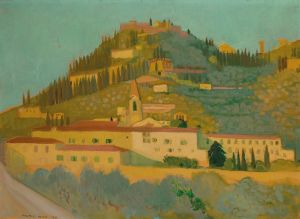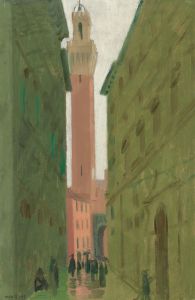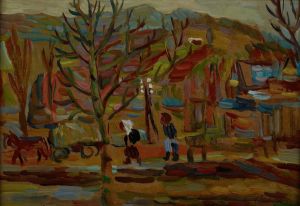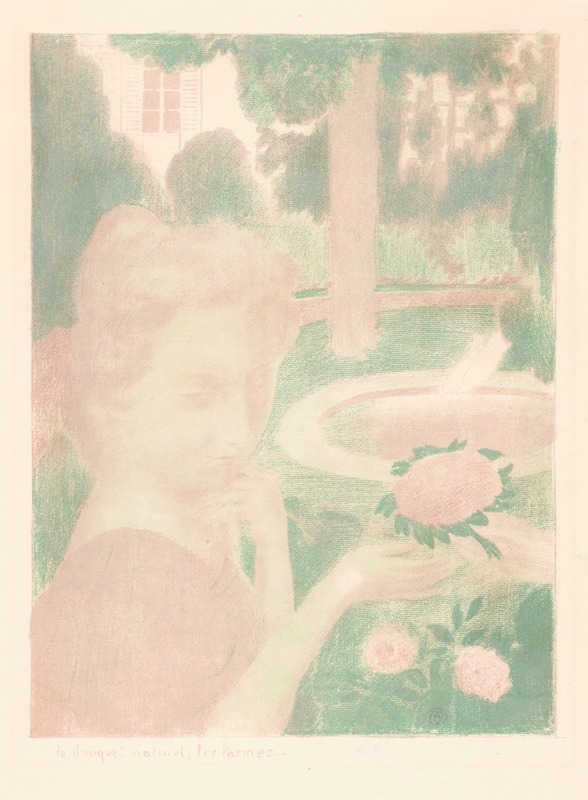
Jonge vrouw krijgt bloemenboeket in een tuin
A hand-painted replica of Maurice Denis’s masterpiece Jonge vrouw krijgt bloemenboeket in een tuin, meticulously crafted by professional artists to capture the true essence of the original. Each piece is created with museum-quality canvas and rare mineral pigments, carefully painted by experienced artists with delicate brushstrokes and rich, layered colors to perfectly recreate the texture of the original artwork. Unlike machine-printed reproductions, this hand-painted version brings the painting to life, infused with the artist’s emotions and skill in every stroke. Whether for personal collection or home decoration, it instantly elevates the artistic atmosphere of any space.
"Jonge vrouw krijgt bloemenboeket in een tuin" (translated as "Young Woman Receiving a Bouquet of Flowers in a Garden") is a painting by the French artist Maurice Denis. Maurice Denis (1870-1943) was a prominent figure in the Symbolist and Nabi movements, known for his contributions to both painting and art theory. His work often emphasized the importance of decorative elements and the spiritual aspects of art.
Denis was born in Granville, Normandy, and studied at the Académie Julian in Paris. He was deeply influenced by the works of Paul Gauguin and Pierre Puvis de Chavannes, which led him to co-found the Nabi group in 1888 along with artists like Pierre Bonnard and Édouard Vuillard. The Nabis sought to break away from the naturalism of the Impressionists and instead focused on the symbolic and decorative potential of color and form.
"Jonge vrouw krijgt bloemenboeket in een tuin" exemplifies Denis's style during the late 19th and early 20th centuries. The painting depicts a serene garden scene where a young woman is receiving a bouquet of flowers. The composition is characterized by its flat planes of color and the use of simplified, almost abstract forms. This approach is typical of Denis's work, which often sought to convey a sense of harmony and tranquility.
The painting reflects Denis's belief in the importance of capturing the spiritual essence of a scene rather than its literal appearance. The garden setting, with its lush greenery and blooming flowers, creates a sense of an idyllic, almost otherworldly space. The young woman, central to the composition, is depicted with a sense of grace and poise, embodying the ideal of feminine beauty that Denis often explored in his work.
Denis's use of color in this painting is particularly noteworthy. He employs a palette of soft, muted tones that enhance the dreamlike quality of the scene. The interplay of light and shadow is handled with subtlety, creating a gentle, diffused illumination that adds to the painting's overall sense of calm.
Throughout his career, Maurice Denis remained committed to the idea that art should be a reflection of the artist's inner vision and spiritual beliefs. He wrote extensively on the subject, and his theoretical writings had a significant impact on the development of modern art. Denis's work, including "Jonge vrouw krijgt bloemenboeket in een tuin," continues to be celebrated for its beauty, its innovative use of color and form, and its ability to evoke a sense of the transcendent.
Today, Maurice Denis's paintings can be found in major museums and collections around the world, including the Musée d'Orsay in Paris and the Museum of Modern Art in New York. "Jonge vrouw krijgt bloemenboeket in een tuin" remains a testament to Denis's skill as a painter and his dedication to creating art that speaks to the soul.






